Table of Contents
Zen of Cloud
Learning Cloud Computing by Examples
Second Edition
Comic Strips by Sabrina Bai and Cover Painting by Jing Zhao. Used with Permission.
CRC Press
Taylor & Francis Group
6000 Broken Sound Parkway NW, Suite 300
Boca Raton, FL 33487-2742
2019 by Taylor & Francis Group, LLC
CRC Press is an imprint of Taylor & Francis Group, an Informa business
No claim to original U.S. Government works
Printed on acid-free paper
International Standard Book Number-13: 978-1-138-33260-7 (Hardback)
This book contains information obtained from authentic and highly regarded sources. Reasonable efforts have been made to publish reliable data and information, but the author and publisher cannot assume responsibility for the validity of all materials or the consequences of their use. The authors and publishers have attempted to trace the copyright holders of all material reproduced in this publication, and apologize to copyright holders if permission to publish in this form has not been obtained. If any copyright material has not been acknowledged please write and let us know so we may rectify in any future reprint.
Except as permitted under U.S. Copyright Law, no part of this book may be reprinted, reproduced, transmitted, or utilized in any form by any electronic, mechanical, or other means, now known or hereafter invented, including photocopying, microfilming, and recording, or in any information storage or retrieval system, without written permission from the publishers.
For permission to photocopy or use material electronically from this work, please access www.copyright.com (http://www.copyright.com/) or contact the Copyright Clearance Center, Inc. (CCC), 222 Rosewood Drive, Danvers, MA 01923, 978-750-8400. CCC is a not-for-profit organization that provides licenses and registration for a variety of users. For organizations that have been granted a photocopy license by the CCC, a separate system of payment has been arranged.
Trademark Notice: Product or corporate names may be trademarks or registered trademarks, and are used only for identification and explanation without intent to infringe.
Visit the Taylor & Francis Web site at
http://www.taylorandfrancis.com
and the CRC Press Web site at
http://www.crcpress.com
Contents
I wrote the first edition of Zen of Cloud in 2014, right after Windows Azure was renamed Microsoft Azure. The new name sent an important signalMicrosoft's cloud platform was not only about Windows technologies. Instead, it was an open platform that embraced all workloads. Four years later, Linux-based workloads have taken over 42% of Azure cores. And that number is still rising.
The openness of Azure has given me a terrific opportunity to look at the cloud landscape with a broader vision. Somewhat ironically, I worked on non-Microsoft technologies much more than before I had joined Microsoft. Now, after four years of accumulation, I think I'm ready to write an updated version to share my learnings.
This book will be quite different from the first edition, which focused exclusively on Microsoft Azure technologies. This book takes a completely different approachit focuses on workloads instead of technologies. At the end, what you care about is how you can operate you own workloads with high service qualities. Coincidentally, Azure (or any other cloud platform) doesn't care much about which technologies you choose, because at the end, what Azure cares about is compute consumption. As long as you can run your workloads with high efficiency, Azure is more than happy to help you achieve more regardless of which technologies or frameworks you use.
So this book is all about workloads. I'll discuss various scenarios and help you to navigate through various possible paths. I'll still cover a lot on Azure, but I'll discuss other platforms and technologies as well. The grand goal of this book is to help you to maintain clarity as you take on your journey to the cloud. The book will explain how's, but it focuses more on whys. And I hope you'll enjoy reading the book as much as I enjoyed writing it.
Organization of the Book
The first two chapters of the book cover fundamental ideas of the cloud. I recommend you read these two chapters if you are new to cloud computing. Otherwise, you can skip ahead and pick the chapters of your interests. Except for the first two chapters, all the chapters are pretty much independent from each other, so you can read them in any order.
Each chapter in this book contains a mixture of special sections, including theories, patterns, tutorials, hands-on labs, patterns, warnings, best practices and random information. A unique icon marks each of these sections. Skipping any of these sections should not affect your ability to continue reading the rest of the book. So you can use these icons to tailor your reading experience. For example, if you learn best with hands-on practice, you can follow through all tutorials and hands-on labs; if you are interested mostly in architecture and design patterns, you can spend more time with the design pattern sections; and if you want to geek out on a subject, the theory sections are your best friends.
 | Tutorials. Tutorials focus on simple scenarios. They guide you to get something up and running quickly. |
 | Hands-on labs. Hands-on labs walk you through end-to-end implementations of typical scenarios. |
 | Theories. These sections drill into technical and mathematical details of a specific topic. If you are new to the topic and want to understand its underlying mechanism, you should read these sections. |
 | Patterns. These sections provide background information on design patterns used in text. If you are interested in a pattern, you should read the corresponding section to understand the key ideas and concepts behind the pattern. |
 | Warnings. These notes provide warnings and reminders of common pitfalls. |
 | Best practices. These are useful tips that help you to be at the top of your game. |
 | Random information. These are small pieces of random information that provide interesting detours from the text. They provide some fun facts and background information for the geeks. |
Supplements
Cloud is changing fast, so the tutorials and labs are likely to change. The book comes with a companion GitHub repository at https://github.com/Haishi2016/ZoC.git, where you can find updated tutorials, samples, and labs.
 Haishi Bai is a Principal Software Engineer at Microsoft Azure. He wrote his first program when he was 12, and, ever since, the world has been all about software and services. In his 20 years of professional life, he's been engaged in various areas ranging from finance to public safety, and he's taken on different roles such as architect, development lead, and project manager. He's also a passionate educator who loves to share his knowledge. He's the author of 8 cloud computing books (including this one). He also runs a technical blog at http://blog.haishibai.com that focuses on cloud technologies. The site attracts over 60,000 views monthly. His Twitter handle is @HaishiBai2010. He's also a volunteer teacher of TEAL, which aims at bringing computer science education to all schools.
Haishi Bai is a Principal Software Engineer at Microsoft Azure. He wrote his first program when he was 12, and, ever since, the world has been all about software and services. In his 20 years of professional life, he's been engaged in various areas ranging from finance to public safety, and he's taken on different roles such as architect, development lead, and project manager. He's also a passionate educator who loves to share his knowledge. He's the author of 8 cloud computing books (including this one). He also runs a technical blog at http://blog.haishibai.com that focuses on cloud technologies. The site attracts over 60,000 views monthly. His Twitter handle is @HaishiBai2010. He's also a volunteer teacher of TEAL, which aims at bringing computer science education to all schools.

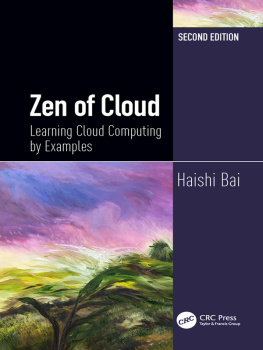

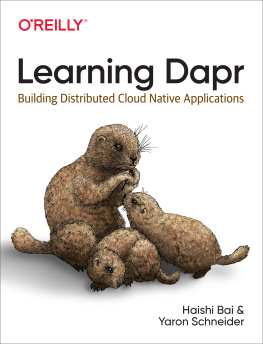
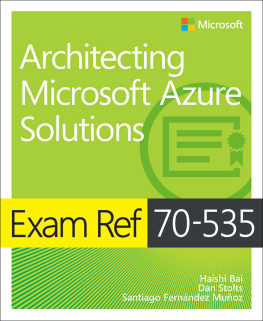



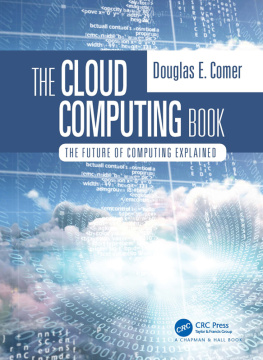

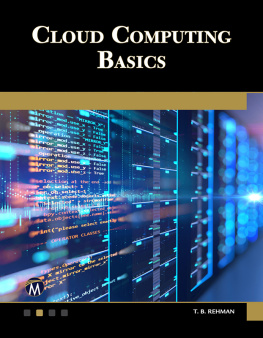
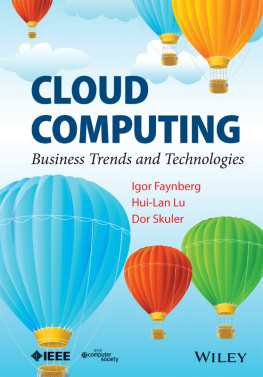
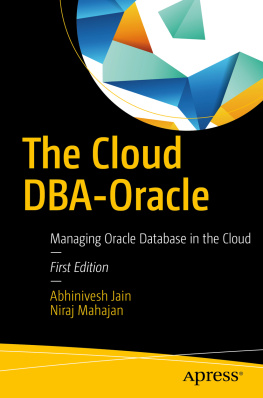
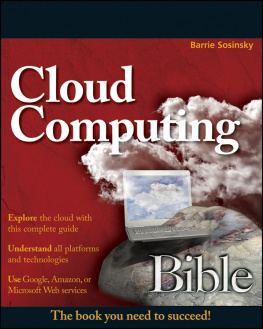
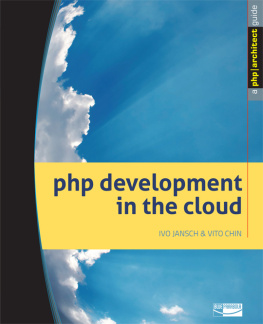

 Haishi Bai is a Principal Software Engineer at Microsoft Azure. He wrote his first program when he was 12, and, ever since, the world has been all about software and services. In his 20 years of professional life, he's been engaged in various areas ranging from finance to public safety, and he's taken on different roles such as architect, development lead, and project manager. He's also a passionate educator who loves to share his knowledge. He's the author of 8 cloud computing books (including this one). He also runs a technical blog at http://blog.haishibai.com that focuses on cloud technologies. The site attracts over 60,000 views monthly. His Twitter handle is @HaishiBai2010. He's also a volunteer teacher of TEAL, which aims at bringing computer science education to all schools.
Haishi Bai is a Principal Software Engineer at Microsoft Azure. He wrote his first program when he was 12, and, ever since, the world has been all about software and services. In his 20 years of professional life, he's been engaged in various areas ranging from finance to public safety, and he's taken on different roles such as architect, development lead, and project manager. He's also a passionate educator who loves to share his knowledge. He's the author of 8 cloud computing books (including this one). He also runs a technical blog at http://blog.haishibai.com that focuses on cloud technologies. The site attracts over 60,000 views monthly. His Twitter handle is @HaishiBai2010. He's also a volunteer teacher of TEAL, which aims at bringing computer science education to all schools.